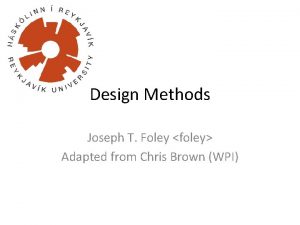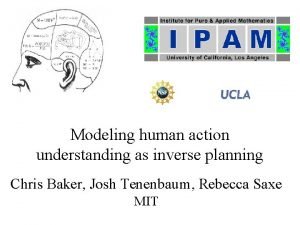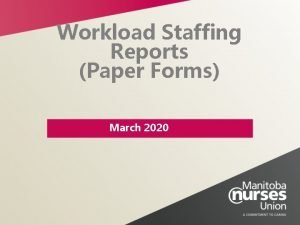Academic Workload Planning Understanding Unintended Consequences Dr Sue





- Slides: 5

Academic Workload Planning: Understanding Unintended Consequences Dr Sue Hornibrook Kent Business School 20 th November 2012

Workload Allocation Models � an effective system “allocates workload equitably to the participants in a transparent manner such that staff behaviour is aligned with departmental strategic goals” (Burgess et al, 2003: 230) �A continuum of approaches ranging from informal approach to a comprehensive/complex approach (Barrett & Barrett 2007, 2010; Vardi 2009) � Human Resource Management orientation - a ‘hard’ or ‘soft’ approach

Workload Allocation Models � What is the impact upon individual academic attitudes, behaviour and achievement of institutional goals? � An Organisational Justice (Fairness) Perspective ◦ Distributive Justice ◦ Procedural Justice ◦ Interactional Justice (Interpersonal and informational) � Perceptions of justice (injustice) impact on Organisational outcomes – positive (negative)

A Case Study � Background: A Business School � The Model – comprehensive/complex points based approach � Consultation (35 responses) � Benefits of the Model: academic staff identified need for effective management and transparency in planning individual workloads (Vardi 2009; Barrett and Barrett 2007; Houston et al 2006)

A Case Study � Disadvantages ◦ ◦ ◦ of the Model: Measurability – inputs or outputs? Negative impact on collegiality Manipulation? Accuracy and transparency Stick or carrot? � Workload Allocation Models not only add to the administrative burden but can also impact on perceptions of unfairness. � Resistance, negative retaliatory behaviours and withdrawal of discretionary behaviours









